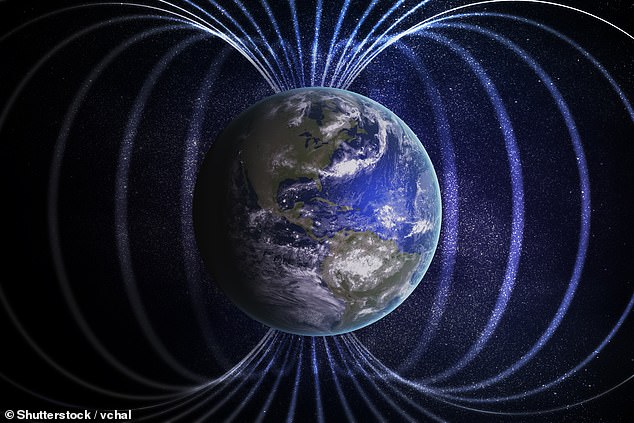Scientists have discovered a massive doughnut-shaped structure buried thousands of miles beneath our feet.
Researchers at the Australian National University used seismic waves generated by earthquakes to peer into the Earth’s mysterious molten core.
By tracing the path of these waves across the planet, researchers found a region a few hundred kilometers thick where they were traveling two percent slower than normal.
This doughnut-shaped structure runs parallel to the equator in a ring around the edge of the liquid outer core, and could be responsible for powering our planet’s protective magnetic field.
Professor Hrvoje Tkalčić, lead author of the study, said: “The magnetic field is a fundamental ingredient that we need for life to survive on the surface of our planet.”
Scientists have discovered a previously undetected doughnut-shaped region buried within the Earth that could be responsible for helping to generate the Earth’s magnetic field (file image)
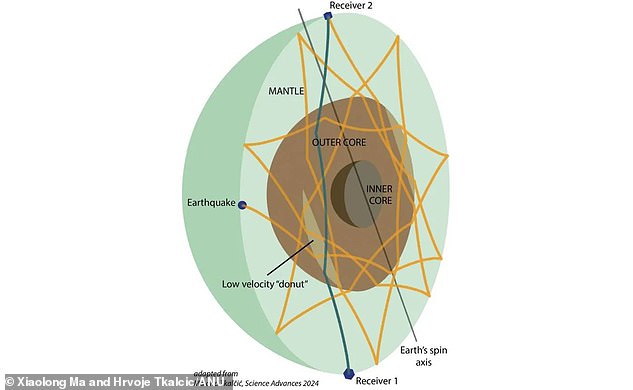
The researchers found a region hundreds of kilometers thick and thousands of kilometers deep that wraps around the equator in the shape of a torus (dubbed the “low-velocity donut”).
The Earth is made up of four main layers: the surface crust, the semi-molten mantle, a liquid metal outer core, and a solid metal inner core.
When the movement of tectonic plates in the crust creates earthquakes, these produce vibrations that propagate to all other layers of the Earth.
Using the global network of seismographic stations, researchers can see how waves propagate and make predictions about conditions beneath the surface.
Scientists generally only observe the large, powerful wave fronts that travel around the world during the first hour or so after an earthquake.
However, Professor Tkalčić and his co-author Dr Xiaolong Ma were able to detect this structure by studying the faint traces left by the waves many hours after the initial tremor.
This method revealed that seismic waves traveling near the poles moved faster than those near the equator.
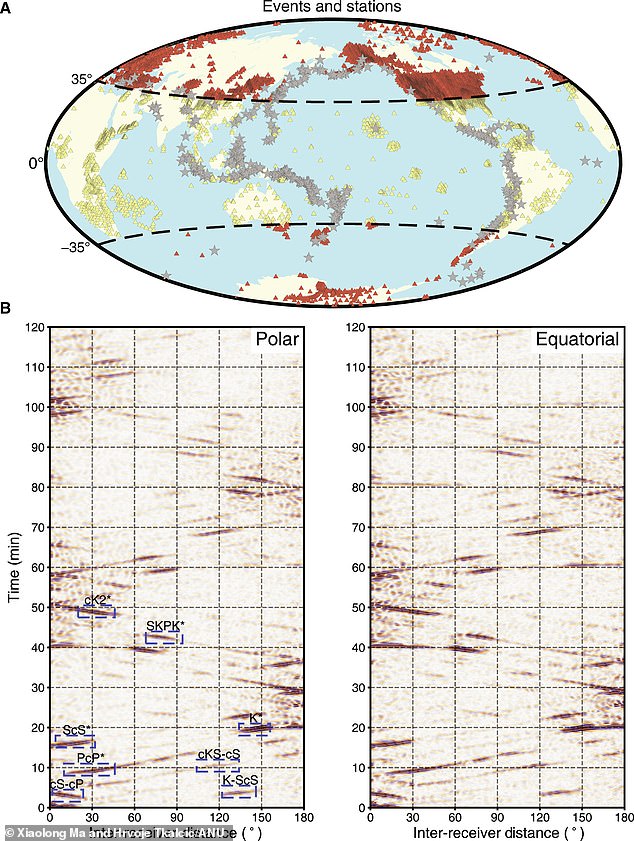
The doughnut was detected by measurements of seismic waves triggered by earthquakes around the world (pictured above). By analyzing this data, researchers found a difference in speed between waves traveling along the poles (bottom left) and those traveling along the equator (bottom right).
By comparing their results with different models of the Earth’s interior, Professor Tkalčić and Dr Ma found that this was best explained by the presence of a vast underground “torus”, or doughnut-shaped region.
They predict that this region is only found at low latitudes and runs parallel to the equator near the top of the outer core, where the liquid section meets the mantle.
“We don’t know the exact thickness of the doughnut, but we assume that it extends to a few hundred kilometres below the core-mantle boundary,” says Professor Tkalčić.
Because of the region’s pivotal role, its discovery may also have profound implications for the study of life on Earth and other planets.
Earth’s outer core has a radius of about 2,160 miles (3,480 kilometers), making it slightly larger than Mars.
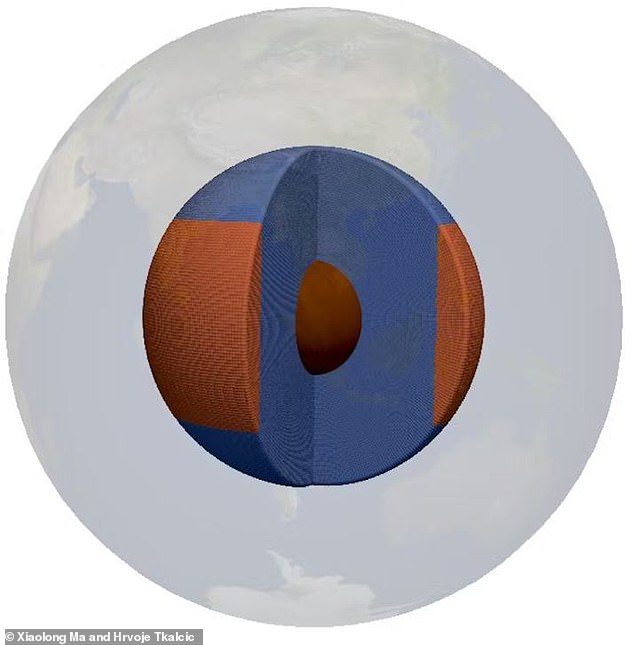
The best explanation for these data was the presence of an area of low-density material (in red image) located near the surface of Earth’s liquid outer core.
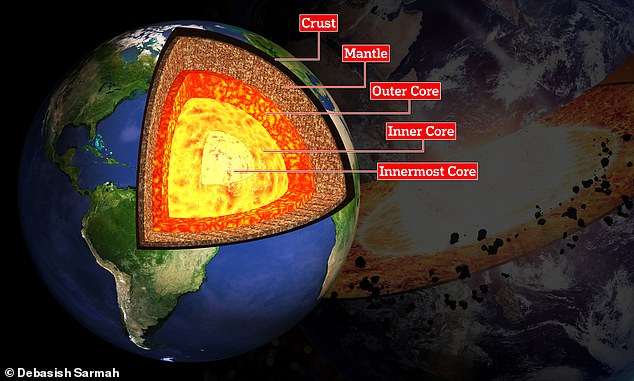
The Earth’s inner and outer cores are responsible for generating the planet’s magnetic field, without which life on Earth would not be possible.
Composed primarily of hot nickel and iron, convection currents coupled with the Earth’s rotation force the liquid metal in this layer to form long, vertical vortices running in a north-south direction, like giant manganese vortices.
It is the swirling currents of these liquid metals that act like the dynamo, powering the Earth’s magnetic field.
Since this doughnut-shaped region has “floated” to the top of the liquid outer core, it suggests it could be rich in lighter elements such as silicon, sulfur, oxygen, hydrogen or carbon.
Professor Tkalčić says: ‘Our findings are interesting because this low velocity within the liquid core implies that we have a high concentration of light chemical elements in these regions that would cause seismic waves to slow down.
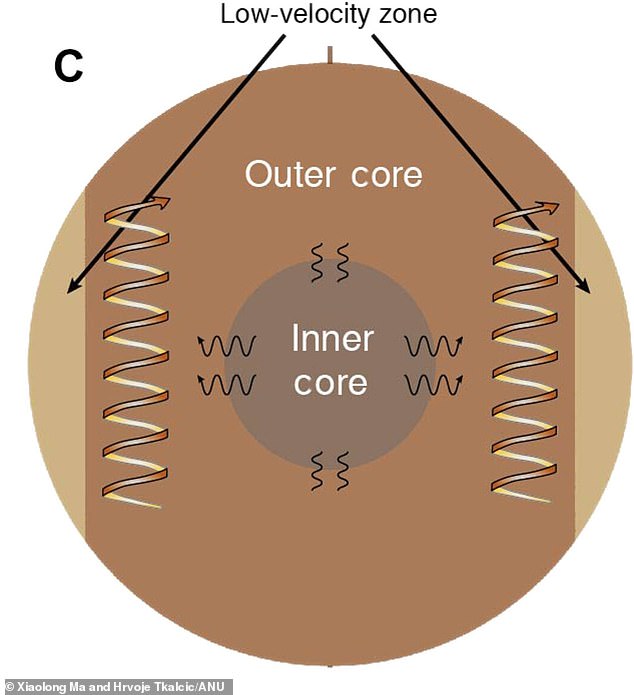
Researchers believe the doughnut-shaped region could be partly responsible for churning liquid metal in the outer core into the waterspout-shaped vortices that generate the planet’s magnetic field.
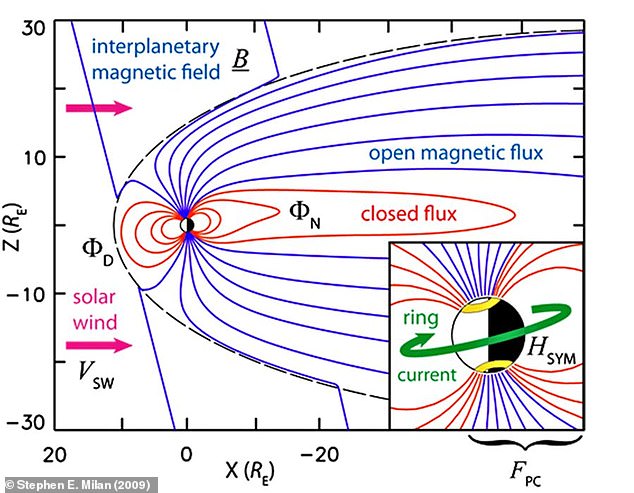
Earth’s magnetic field (pictured) deflects charged particles carried by the solar wind that can destroy the DNA of living things.
‘These light elements, along with temperature differences, help stir the liquid in the outer core.’
Without this movement driving the planet’s internal dynamo, Earth’s magnetic field might not have formed.
Without the magnetic field, the planet’s surface would be exposed to a constant bombardment of charged particles from the sun that can destroy the DNA of living beings.
This doughnut-shaped region, therefore, could be a crucial piece of the puzzle that explains why life developed on Earth and what we might look for in habitable planets elsewhere.
Dr. Tkalčić concludes: “Our results could promote further research into the magnetic field both on Earth and on other planets.”


